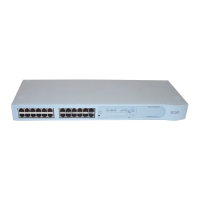Creating and Managing Users in the Local User Database 301
10 Do one of the following:
■ To change the order of RADIUS servers in the RADIUS server group,
see “Changing the Order in a RADIUS Server Group”.
■ To close the Create RADIUS Server Group dialog box and save the
changes, click Finish.
Changing the Order in a RADIUS Server Group
If load balancing is not enabled, the WX always uses the first server in the
list. Only if the server does not respond is the next server in the list used.
If load balancing is enabled, the first AAA request goes to the first
RADIUS server in the list. The second AAA request goes to the second
RADIUS server in the list, and so on, until the end of the list is reached,
after which the first server in the list is used again. Any server that does
not respond is skipped. If none of the servers responds, the WX goes to
the next method in the method list.
To change the order of RADIUS servers in a RADIUS server group:
11 In the Create RADIUS Server Group wizard, select the RADIUS server
whose position in the list you want to change.
12 Click Move Up to move the RADIUS server up the list, or Move Down to
move the RADIUS server down the list.
13 Repeat step 11 and step 12 for each server you want to move up or
down the list.
Creating and
Managing Users in
the Local User
Database
The WX switch contains a local database that can store user information
for a 3Com Mobility System. You can use the local database to create
users and authenticate them, or you can use the local database in
conjunction with a RADIUS server. For example, although you might use a
RADIUS server to manage most users, you could define IT staff as users in
the local database in the event that the RADIUS server is unavailable.
You can create two types of users in the local database:
■ Named users — These users are authenticated by username and
password and are assigned to specific VLANs. Users include
administrators and network users. You can group these users by
creating user groups, in order to simplify configuration.

